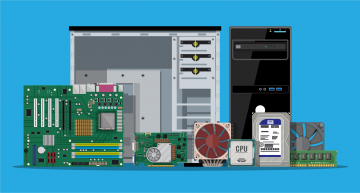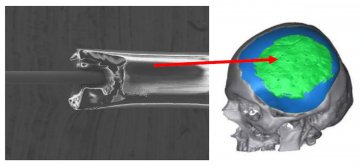Magnetic materials and innovation: past, present and future (part 1)
The revolutionizing effects of magnetic materials of today: a reflection of Magnetism in Every-day life
The historical value of magnetism
What do you imagine when you read or hear the word magnetism? Magnets and magnetism are all around us and affect our lives much more than in the form of souvenirs stuck onto the refrigerator door.
Magnetism is a physical phenomenon known for more than 3,500 years. Around 600 BC, Táles of Miletus was the first to deal with it scientifically. He described the attractive interaction between magnetite and iron. The Chinese were able to use magnetite in the construction of a simple compass in the shape of a spoon on a bronze plate, the handle of which pointed to the south (around 85 BC).
Magnetism has developed vastly since then. Now, we know more and more about magnetic materials and magnetism itself (i.e. magnetization processes, basic theoretical overview, Barkhausen noise, etc.). Moreover, through the way, magnetism helped the development of understanding and batter using other physical phenomenons as well, like electricity (i.e. Dynamic Theory of Electromagnetic Field), scientific and technical instruments, etc.
After the Second World War, the rapid development of computers took a boost, and here the main storage medium was again magnetic material. It started with ferrite cores, continued with magnetic tapes, through floppy disks and hard drives, which we use to this day.

New Magnetic materials and their effect on the modern world:
We currently recognize 4 main directions in the development of new magnetic materials: spintronics, storage media, sensors, and materials for energy.
Spintronics:
Spintronics is a new field of electronics, where information is transmitted not only by electric charge but also by magnetic moment. The rapid development of spintronics occurred in the 1980s with the discovery of a huge change in electrical resistance due to the magnetic field („Giant Magneto Resistance“ – GMR). One of the huge advantages of such a GMR member is that it can be produced in very small dimensions – of the order of approx. 10 nm. They realized this in the early 1990s also in IBM and produced miniature readers based on the GMR phenomenon , which allowed a sharp increase in the capacity of Harddisks and thus the entire computer industry. Currently, all modern computers that you see around you use read headers based on GMR phenomena in hard disks. The discovery of the GMR phenomenon eventually proved to be so important that it was also awarded the Nobel Prize in 2007 by prof. Grunberg and prof. Ferto.
Memory and Storage:
If you know virtually nothing about computers or the memory principles, and the hardeners used in them, you still must have heard about the “RAM” (Random Access Memory) somewhere. Well, this hasn’t been developed without the help of magnetism neither. See the scientists and engineers realized that the GMR phenomenon could be used not only to construct read heads but also to produce ready-made memory, where each unit and zero is represented by one GMR member. Magnetic Random Access Memory – MRAM has appeared. These combine the benefits of a large capacity Hard Disk, fast access to RAM-like information, and the ability to read and write them indefinitely (unlike SSDs, where you can write many times, but not indefinitely).

Materials for energy:
The main challenge here that can be addressed through magnetism is materials for electromobility. These will not be classic transformer sheets, properties of which do not suit working at higher frequencies. One of the possibilities would be the use of modern powder materials, which have the advantage of powdered ferrites (small eddy currents and therefore significantly lower losses) but have a higher magnetic saturation compared to them. Pressing enables the production of materials in the final form, without the need for additional machining (as in the case of sheets).
Sensors:
In addition to new memories and spintronics, another major trend in magnetic materials is the development of sensors. This is also what we as RVmagnetics are most passionate about. The modern world will be based on the Internet of Things, where every object will be monitored through the Internet. To achieve proper accuracy, comfort, and most importantly safety in IoT – we need the development of sensors that are robust, easy to manufacture, and versatile.
Magnetic materials offer the possibility of contactless, non-destructive sensing of several parameters (pressure, temperature, vibration, magnetic field, etc.). This allows them to be inserted inside materials and objects. Using modern physical phenomena and processes, it is then possible to develop miniature sensors and read measured quantities from a greater distance.
Even in heavy industry, magnetic materials and sensors developed from those materials prove to be extremely useful. Modern magnetometers can capture (provide measurements from) magnetic materials even in difficult conditions of coal mines, from within battery units, during composite material manufacturing and post-manufacturing, in electric motors, etc.

Biocompatible glass-coated magnetic microwires can be used to measure intracranial temperature and pressure after implantation of a titanium prosthesis. Using modern physical phenomena, it is possible to measure temperature with sensitivity to 0.01°C (R.Varga CPM TIP UPJŠ + RVmagnetics, a.s.)

The microwires can also be inserted into composite layers (or glued onto them) and provide real-time contactless measurements during and post-production
There is a lot to be explored in magnetism as such. We as RVmagnetics are here to solve the measurement needs of our clients using magnetic principals and miniaturized magnetic sensors; revolutionizing the measurement industry by bringing something new to the table with basic magnetic principles known to humanity for more than 3,500 years.



